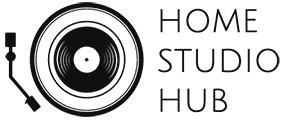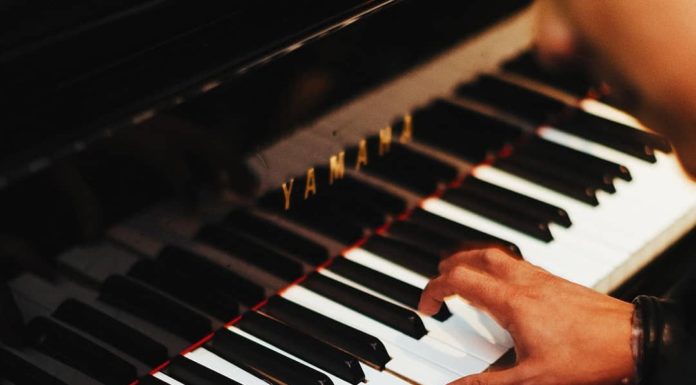Getting the right podcast equipment is essential for starting a show. Viewers will instantly notice if things sound faint or unprofessional, and many of them will ditch out even before they give your content a chance. Fortunately, getting the right equipment isn’t difficult.
Here is the required podcast equipment for beginners, as well as some useful extras.

Best 3 Podcast Equipment Packages for Beginners
Note that you may be able to get podcast equipment packages that include a discount on their components, which is a good way to save money.
We highly recommend going this route if you’re just beginning to podcast, there are lots of highly recommended podcast equipment packages that you can build off once you start getting more comfortable with your new podcast.
- Record professional-sounding podcasts—no sound engineer needed—with high-quality studio tools...
- All-in-one kit includes AKG Lyra USB mic, AKG K371 headphones, Ableton Live 10 Lite audioproduction...
- AKG Lyra microphone captures 4K-compatible, Ultra HD-resolution audio for superior fidelity
- Includes TASCAM’s US-2x2 USB audio interface, TM-80 studio condenser microphone, TH-02 headphones,...
- The US-2x2 is a 2-in/2-out USB interface, bus powered from your Mac or Windows computer
- The US-2x2 features Ultra-HDDA preamps for excellent noise and distortion specs, high-performance...
- Everything you need for professional podcasting, music production and digital home recording
- Get a full recording studio "out of the box" including XENYX 302USB mixer with built in USB/audio...
- Premium 5-Input Mixer with XENYX Mic Preamp and USB/Audio Interface
Basic Podcast Equipment to Start a Podcast
#1: A Computer
What do you need to start a podcast, more than anything else? Believe it or not, it’s not a microphone.
A computer is the heart of your podcast show. It’s where you can edit, upload, and modify audio data to create a professional-sounding show. While almost anything of laptop size or larger will work, avoid trying to substitute a smartphone in since those rarely have the power or processing ability you’ll need.
#2: Recording Software
Your next piece of basic podcast equipment is some reliable recording software. All software here falls into two categories:
- Online Recording: Online recording uses cloud-based services and saves all of your audio remotely. This does not require downloading any software, and it comes with outstanding backup capabilities, which means it’s a popular option.
- Local Recording: Local software saves all audio to your computer, but these programs tend to have more features to justify getting them instead of the easier cloud-based systems.
Most programs have free or basic versions you can use to start out with, as well as paid premium versions with enhanced features.
Be sure to experiment with the software several times before you start recording your first show. Familiarity with your podcast equipment will help ensure your first show turns out significantly better, and this experience is what can turn something into the best podcast recording software for your needs.
Recording software sometimes goes by DAW, which stands for Digital Audio Workstation. There are plenty of options on the market, but the best DAW for recording podcast audio depends on how you feel about it. People like different styles of software, so don’t limit your search to just the most popular options. Experimentation helps. Check out our rundown of the best daws.
#3: A Microphone
Finally, the last piece of basic equipment you need is a microphone capable of recording high-quality audio. This means that built-in mics, headsets, and earbuds are out. Instead, look for an affordable studio-quality USB microphone.
Since most people already have computers, this tends to be the most expensive part of getting your basic equipment. High-quality microphones can range from $50 to several hundred dollars.
Be sure to consider your work environment when deciding which mic to get. For example, if you’re low on desk space, you may want to attach your mic to your ceiling instead. If you do have desk space, check to see whether or not your mic comes with a microphone stand.
Optional Podcast Equipment: Take Your Podcast to the Next Level
These aren’t required for starting a podcast, but they’ll certainly help. Once you’ve got your basic podcast equipment setup above, its time to invest in the nice to haves and the next step for creating a professional podcast studio.
#4: Headphones
A high-quality pair of headphones is extremely useful for recording a podcast. These can play audio to you without the risk of it leaking into your recording, which allows you to monitor things, listen to someone talk, or otherwise expand your options.
The best headphones are over-the-ear style options, preferably with some level of noise canceling. Avoid earbuds, which are not nearly as reliable or as flexible.
If you have several people in the room with you, consider buying a headphone amplifier. These allow you to connect several headphones together while maintaining audio quality.
#5: A Mixer
Mixers are usually associated with concerts and other musical performances, but these devices are particularly useful for podcasts because they offer easy, physical access to many audio controls. They’re also relatively advanced pieces of equipment that take some time to master, so be sure to spend a few hours playing around with one before you use it in a show.
#6: Collaboration Software
Guests are essential for keeping podcasts fresh and exciting, but you can’t fly every guest out to your house unless you start making a truly staggering amount of money.
Instead, look into getting online collaboration software like Skype or Zoom. You can even use Google Meet to collaborate with guests and other members of your show if you’re so inclined.
Don’t limit yourself to one suite of collaboration software, though. Your guests may prefer to use one specific program, and as the host, it’s better to go along with their preferences and ensure they have as easy a time as possible while they’re on your show.
#7: Podcast Hosting
Podcast hosting comes in many forms, from popular app store destinations to individual websites. Visibility is a key part of getting viewers, and thereby support to keep making podcasts. This isn’t as important if you’re only doing them for fun, but if you’re serious, getting noticed is essential.
Make sure your hosting option, whatever it ends up being, can support you as you try to get noticed. If your host only advertises the most popular shows, you may never get noticed at all.
#8: A Blog and a Podcast Marketing Plan
This is arguably moving too far away from podcasting equipment, but blogs are a useful way to communicate with your audience outside of the show itself. They can help gather information, promote announcements, and even serve as a secondary revenue stream.
You can start a basic blog for free through providers like WordPress, though you may need to move to a paid plan once you start getting enough traffic.
At the same time, consider social promotion through platforms like Twitter. Plenty of good podcasts fail due to a lack of marketing, so the earlier you start with that, the better off you’re going to be.
#9: Shock Mounts
Shock mounts are vibration-absorbing pads that help minimize unwanted sounds during recording. This includes the sounds of moving the mic, tapping things, typing on your keyboard, and so on. Shock mounts are not universal, so be sure any product you’re looking at is compatible with your mic.
#10: Windscreens
Finally, windscreens help screen out harsh noises while you’re recording, including the bursts of air from saying letters like p and t. Microphones are significantly more sensitive to slight noises than the human ear is, and those noises will show up in recordings, so a windscreen can help ensure your final audio sounds good enough to share.






![5 Best 25 Key Mini MIDI Controllers [Reviews & Buyer’s Guide]](https://homestudiohub.com/wp-content/uploads/2020/03/null-16-80x60.png)






